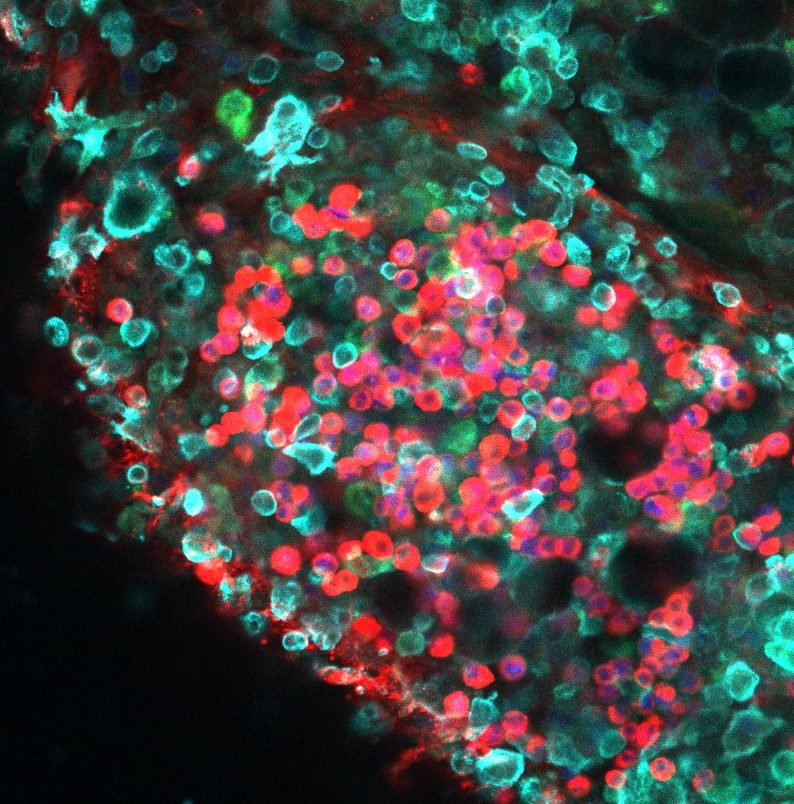Research
Neuro-Immune Axis of African Trypanosomiasis
The African trypanosome, a parasite that causes sleeping sickness, is able to infect humans and survive by evading the innate and adaptive immune system. During the second stage of an infection, parasites cross the blood brain barrier (BBB) and enter the brain causing severe neurological disturbances including hallucinations and disturbances in sleep. We currently have little understanding of how trypanosomes enter the brain or affect brain function, or how they perturb the immune system. Increased understanding of the Neuro-Immune axis, the link between the brain and the immune system, suggest a potential link between the two phenomena. Our initial work on an infection model has identified parasites localised to the adipose tissue and gut. We have identified significant enlargement of the omentum (a specialised adipose tissue that contains small clusters of immune cells) and massive expansion of the omental immune cell population. As the intestinal epithelial immune response drives inflammation along the gut-brain axis, and the omentum is important in host protection following intestinal-epithelial breakdown, these results provide a potential link between infection, immune response and perturbed brain function. This project is an on-going collaboration with Dr John Worthington, Dr Neil Dawson & Dr Mick Urbaniak and is funded by a Faculty of Heath and Medicine PhD studentship to Chloe Barnes and the Dowager Eleanor Peel Trust.


Expansion of immune cell clusters and loss of adipose during trypanosome infection. Whole-mount immunofluorescence staining of murine omentum from naïve (Left) or Trypanosome infected CD1 mouse (right). Green shows CD45 a marker of haematopoietic cells, red shows IgM antibody producing B lymphocytes, Blue shows T lymphocytes. Scale Bar = 50μM
